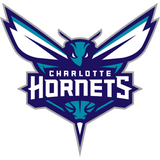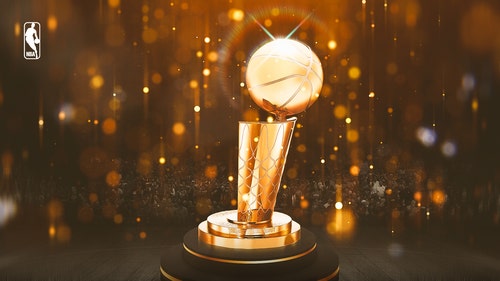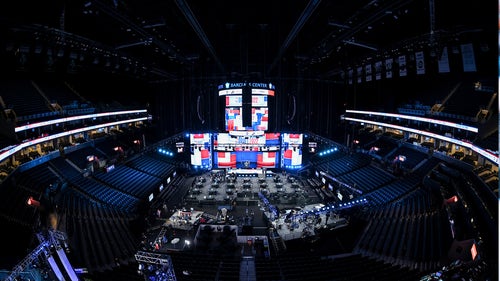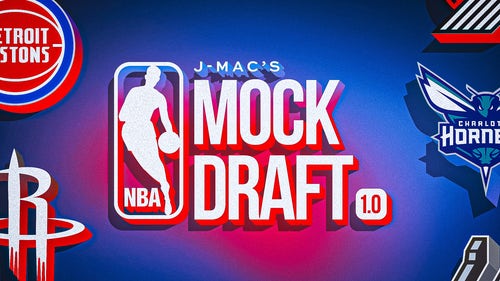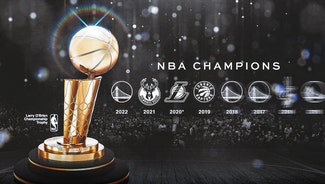
Charlotte Hornets: Brutal Slide Down Standings Spawns Questions
The Charlotte Hornets are 5-17 since the calendar turned to 2017. With the team’s starting five signed through the next two seasons, should the front office stay the course or keep the phone lines hot?
The Charlotte Hornets were one of the feel-good stories of the 2015-16 season, finishing 48-34 and taking the Miami Heat to seven games in the first round of the Eastern Conference Playoffs.
The masses pointed to the Hornets and said “what a cute, plucky team” after they were the victims of a few Dwayne Wade series-clinching plays in Game 6, as well as the meteoric rise to fame of purple shirt guy.
With such unexpected success, Charlotte went into the summer with Marvin Williams, Nicolas Batum, Jeremy Lin, Courtney Lee and Al Jefferson all heading to free agency.
A franchise’s plan can change when it has its best season in 15 years. Charlotte’s long-term plan accelerated and they brought back Batum on a five-year, $120 million deal and rewarded Williams with a four-year, $54.5 million contract for his sterling 2015-16 campaign.
Cody Zeller was signed to a four-year, $56 million extension on Oct. 31.
Kemba Walker and Michael Kidd-Gilchrist round out the healthy starting lineup for the Hornets currently, with that quintet having a plus-8.9 rating this season.
The problem seems to be when that group is not on the floor together, as the next four most used lineups are net rating negatives (excluding a lineup with new Milwaukee Buck Roy Hibbert), according to NBA Stats.
Same Formula, Different Personnel
The Hornets plan of attack last season centered around Walker and his improved jump shot to complement his elite ability to attack the rim.
But when that stalled or Walker needed a breather, Charlotte also had Lin to attack off the bounce, Lee to knock down perimeter shots on a consistent basis and Jefferson to host a class on the intricacies of post play against second units.
This season, Walker and Batum both have had to shoulder bigger loads on the offensive end with the departure of Lin and Lee and the players brought in to fill those shoes have had trouble picking up the slack.
Marco Belinelli was acquired on draft night in exchange for the Hornets’ 2016 first-round pick, and has shot the ball well enough at 37.8 percent on 4.0 attempts per game, per Basketball Reference.
The Roy Hibbert experiment was aborted, as he was traded Feb. 2. Ramon Sessions was quarterbacking the second unit until a torn meniscus on Feb. 3 put him out for four to six weeks.
Jan 28, 2017; Charlotte, NC, USA; Charlotte Hornets guard Kemba Walker (15) drives down court after a lost ball by Sacramento Kings forward Matt Barnes (22) during the first half at the Spectrum Center. Mandatory Credit: Jim Dedmon-USA TODAY Sports
The biggest addition was a player already on the roster in Kidd-Gilchrist. The second pick of the 2012 NBA Draft missed all but seven games last season with a partially. then completely, torn labrum.
This season, Kidd-Gilchrist has played in 55 of 56 games, starting each and playing 29.6 minutes per night. The starting five swapped out Lee for Kidd-Gilchrist, sliding Batum down to the 2 in favor of moving Kidd-Gilchrist up to the 3.
The move excited many Hornets fans, featuring more length and versatility on the wings. However, the move placed another non-shooter on the floor.
That, along with Williams’ regressing this season to his career averages, has severely weakened what was the Hornets’ best offensive weapon last season: the long ball.
In 2015-16, Charlotte both shot and made the fourth-most 3-pointers in the NBA, good for the eighth-best percentage in the league. This season, the Hornets rank 21st in 3-point percentage.
Hall Of Fame Twitter follow Frank Kaminsky is shooting a very mediocre 30.4 percent from deep this season on 4.3 attempts per contest. Williams has come back to earth after an out-of-body experience, from shooting 40.2 percent from deep last season to just 35.3 percent this year.
The Hornets’ own the third-highest percentage of pick-and-roll possessions in the NBA behind only the Toronto Raptors and the Phoenix Suns, according to NBA Stats. Many of those are for Kemba to slice in the lane and create opportunities for himself and others.
In 2015-16, the Hornets were second behind only the Golden State Warriors in catch-and-shoot 3-pointers made per game, according to NBA Stats. This season, they rank 20th in the association, because of possessions exactly like this.
Defenses simply don’t respect Kaminsky when he pops and bluff enough to give Kemba pause when looking to Williams in the corner. Teams will suck in to the paint when Kidd-Gilchrist is on the weak side, knowing he is a non-threat from the perimeter.
Coach Steve Clifford has to be begging his guys to still take those shots, as often the offense gets mucky when Batum and Walker both aren’t out on the court.
Zeller’s absence this last stretch could not have come at a worse time, as the Hornets are in desperate need of his rim running and consistent screen setting (Zeller ranks fourth in the league in screen assists per game, according to NBA Stats).
Charlotte attempted to install a Zeller-lite with Miles Plumlee, but he’s still adjusting to the new scheme and was held out of Wednesday’s game with a strained right calf. The Hornets are a paltry 2-15 without Zeller this season.
Blow It Up Or See It Through?
The Hornets have a first-time All Star in Walker at age 26 in his sixth season. He’s the franchise’s first All-Star since Gerald Wallace in 2010.
All of this says that Walker is in the midst of his prime, giving the Hornets their first star to be drafted by the franchise since Baron Davis, who was selected to an All-Star game the year before the Hornets departed for New Orleans.
So that stuff matters when figuring out which pieces don’t fit with the current puzzle and how to fix it.
Ownership and the front office aren’t about to auction off the roster with all of the momentum accrued last year with several of the same pieces.
A championship is always the goal, but the definition of a successful season is subjective to each team, meaning that if the Hornets can figure out a way to salvage this season without trading everyone but Walker, they’re going to do it.
And why wouldn’t they? A 41-win would season be considered a success now and would likely guarantee a playoff spot.
So what pieces can they part with without sacrificing the ship? Walker and Zeller are near untouchables in my eyes, Walker for obvious reasons and Zeller because of his impact with Charlotte specifically.
hornets
Swarm and Sting 1 dCharlotte Hornets Should Trade for Lou Williams at the Deadline
More headlines around FanSided:
1 d - Charlotte Hornets Look to Snap Three-Game Losing Streak as They Take on Toronto1 d - Buzz City Beat: Charlotte Hornets Lost Their Identity, Queen City at Loss2d - Charlotte Hornets: Kemba and Nic Combine for 45 Points in Third Consecutive Loss2d - Charlotte Hornets: The Trade Deadline Will Define Their Season2d - Buzz City Beat: Who the Hornets are Most Likely to Trade, McConnell Calls Out BatumMore News at Swarm and Sting
He’s made himself into a top-15 center in the league and that footprint is magnified with the Hornets on a nightly basis. His best skills fill a paramount niche for Buzz City and his contract is pretty good when surveying the landscape around him among lumbering big men.
Batum has been good and all of his stats are on par or slightly above where they were last year, but because of that new contract many expected him to take a leap.
He’s far and away Charlotte’s most valuable piece around the league (aside from Walker). in the midst of his prime at age 28 and with relatively low mileage for being in the league nine years.
Still, five years and $120 million will be difficult to move in this new landscape where the massive year-to-year cap increases have come and gone and teams will be strapped for space. It’d be difficult to move him for equal value this year with so much money left on a hefty deal.
The Sacramento Kings got Charlotte to take Belinelli for a first-round pick; maybe the Hornets can do the same to a contender.
Jeremy Lamb looms as a 24-year-old yet to average 20 minutes per game in a season, with perceived upside but whose 3-point percentage has decreased each of the last four seasons.
That leaves the two most likely trade pieces as Williams and Kidd-Gilchrist. There may be a market for a power forward who can (sometimes) shoot from range, move well enough, kinda play defense and occasionally rebound.
But one of those teams, the Raptors, just got their man in Serge Ibaka and any teams interested may be scared away by an eight-figure number for the next four years on a 30-year-old regressing after a career year.
That leaves Kidd-Gilchrist, who seems to be the most likely to be moved, both because of value and ability to be shed from the team. At age 23, many would see trading Kidd-Gilchrist as an admission by the front office they were wrong.
That doesn’t mean that Kidd-Gilchrist isn’t a good NBA player or that the Hornets drafted a bust, but he’s not what this team needs.
Feb 3, 2016; Charlotte, NC, USA; Charlotte Hornets forward Michael Kidd-Gilchrist (14) warms up before the game against the Cleveland Cavaliers at Time Warner Cable Arena. Mandatory Credit: Sam Sharpe-USA TODAY Sports
I’m sure Charlotte knew what he was coming out, but thought surely by year five that he would not be shooting 12.5 percent from deep on 0.1 attempts per night. In 2017, playing a offensive non-factor on the perimeter nearly 30 minutes per night is hard.
Just ask the Memphis Grizzlies and Oklahoma City Thunder. And, yes, offensive rebounds and weak side cuts can be huge momentum boosters, but it doesn’t make up for the other 90 percent of offensive possessions per night where that one defender is another roadblock to the rim.
More from Hoops Habit
The Grizzlies are blessed with the point guard play of Mike Conley and interior (and now exterior) dominance of Marc Gasol and Zach Randolph. The Thunder have a human missile in Russell Westbrook.
There’s ways to make it work, but it makes the margin for error so small when the spacing isn’t there in the era of pace and space.
Kidd-Gilchrist is a very good defender, especially at the basket for a player his size. Players are shooting 6.4 percent worse within six feet of the rim when contested by him, according to NBA Stats.
He absolutely has value as a defensive stopper on a few franchises thirsty for playoff appearances, such as the New Orleans Pelicans and Milwaukee Bucks. Revisiting Milwaukee to propose a Kidd-Gilchrist for Greg Monroe may be worth doing.
Or exploring the idea of Kidd-Gilchrist for Tyreke Evans in New Orleans, provided Evans would re-sign with the Hornets in the summer.
Questions Abound As Trade Deadline Looms
The NBA trade deadline is set for Feb. 23 at 3 p.m. Eastern. The Charlotte Hornets will be one of the teams sure to be making calls from now until then.
Trading Michael Kidd-Gilchrist may be a surrender to the five-year project the Hornets and Kidd-Gilchrist have been on together, but it also may salvage this core and its playoff chances.
The answer is not to completely blow it up, as general manager Rich Cho and the team finally have some momentum with this franchise and in the city of Charlotte, and will not want to relinquish it nor let it go off the rails.
On this current slide, it’s teetering. Time will tell if the team is able to regain its balance or not as the likelihood of a second-straight playoff appearance has been looking bleaker by the day since the calendar turned.
